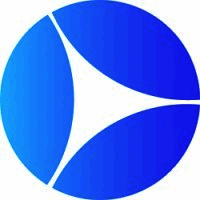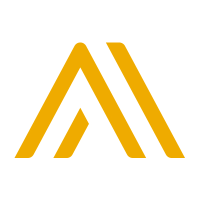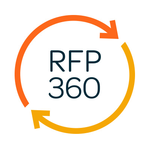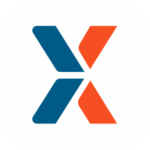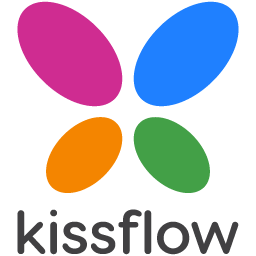Description

TRADOGRAM
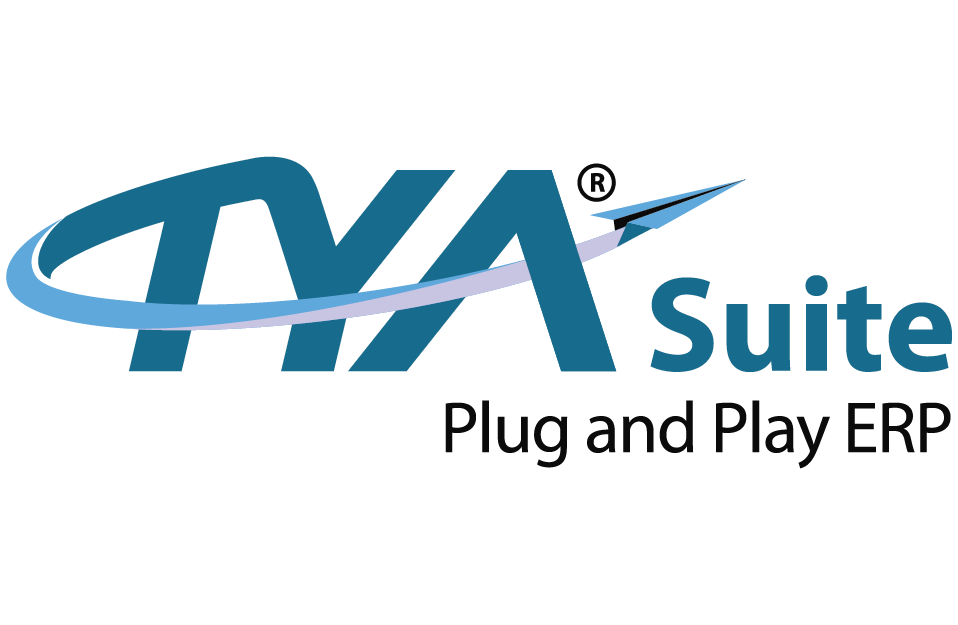
TYASuite Procurement to Pay
Comprehensive Overview: TRADOGRAM vs TYASuite Procurement to Pay
Overview of TRADOGRAM and TYASuite Procurement to Pay
Both TRADOGRAM and TYASuite Procurement to Pay are software solutions designed to streamline procurement processes within organizations. They serve different market segments, focusing on enhancing efficiency, visibility, and control over procurement operations. Here's a comprehensive overview:
a) Primary Functions and Target Markets
TRADOGRAM:
-
Primary Functions:
- Purchase Management: Facilitates purchase orders, requisitions, and approvals.
- Supplier Management: Offers tools for supplier evaluation and relationship management.
- Expense Tracking: Tracks purchasing expenses and budget management.
- Inventory Management: Helps monitor inventory levels and manage stock efficiently.
- Reporting and Analytics: Provides detailed insights into purchasing activities and supplier performance.
-
Target Markets:
- Primarily targets small to medium-sized enterprises (SMEs) across various industries seeking a cost-effective and user-friendly procurement solution.
- Particularly popular in sectors like manufacturing, retail, and hospitality.
TYASuite Procurement to Pay:
-
Primary Functions:
- Procurement Automation: Automates purchase orders, supplier quotations, and requisition processes.
- Invoice Management: Streamlines invoice processing and approval workflows.
- Budget Control: Monitors budgets and expenditures in real-time.
- Compliance and Audit: Ensures compliance with procurement policies and facilitates audits.
- Integration: Easily integrates with existing ERP systems to offer a seamless experience.
-
Target Markets:
- Aimed at small to large enterprises looking for comprehensive procurement solutions.
- Especially caters to industries such as FMCG, pharmaceuticals, construction, and IT.
b) Market Share and User Base
-
TRADOGRAM:
- Holds a steady position in the procurement software market for SMEs.
- Known for its intuitive interface and ease of use, it has gained a loyal user base, primarily among small and medium businesses. Market penetration remains modest compared to larger enterprise solutions.
-
TYASuite Procurement to Pay:
- Has a growing presence, particularly in regions with expansive industrial growth.
- Seen as a robust solution for businesses seeking to integrate procurement with other financial and operational functions. It has been expanding its user base significantly in emerging markets where digital transformation is on the rise.
c) Key Differentiating Factors
-
TRADOGRAM:
- Simplicity and Ease of Use: Known for a user-friendly interface that does not require extensive training.
- Flexible Pricing: Offers flexible, affordable pricing models attractive to SMEs.
- Customization: Allows for substantial customization to fit varied business needs without complex implementations.
-
TYASuite Procurement to Pay:
- Comprehensive Feature Set: Provides a wide range of features integrating procurement with payment and compliance, suitable for larger enterprises.
- ERP Integration: Seamless integration with popular ERP systems sets it apart for larger organizations needing unified systems.
- Scalability: Designed to scale with business growth, accommodating more complex needs and larger operations efficiently.
Both systems offer valuable tools for optimizing procurement processes but cater to different organizational sizes and needs. While Tradogram is ideal for smaller businesses looking for an agile and straightforward solution, TYASuite excels in integration and scalability, making it more appealing to larger enterprises.
Contact Info

Year founded :
2014
+1 844-328-9523
Not Available
Canada
http://www.linkedin.com/company/tradogram

Year founded :
Not Available
Not Available
Not Available
Not Available
Not Available
Feature Similarity Breakdown: TRADOGRAM, TYASuite Procurement to Pay
When comparing TRADOGRAM and TYASuite Procurement to Pay, both of which are procurement software solutions, it's important to evaluate their core features, user interfaces, and any unique offerings that set them apart.
a) Core Features in Common:
-
Procurement Management:
- Both platforms offer tools to manage procurement processes, including purchase requests, approvals, and order generation.
-
Supplier Management:
- TRADOGRAM and TYASuite both provide features for managing supplier information, evaluating performance, and fostering supplier relationships.
-
Purchase Order Management:
- Users can create, track, and manage purchase orders in both systems, ensuring orders are fulfilled accurately and efficiently.
-
Spend Analytics:
- Both solutions provide analytics tools to help organizations track spending, identify trends, and optimize procurement budgets.
-
Invoice Management:
- Each platform supports the management of invoices, ensuring accurate billing and timely payments.
-
Reporting:
- Comprehensive reporting features are available in both, offering insights into procurement activities and financial performance.
b) User Interface Comparison:
-
TRADOGRAM:
- TRADOGRAM emphasizes a user-friendly and intuitive interface. It often features a clean, modern design with dashboards that are customizable. The focus is on ease-of-use with straightforward navigation, making it accessible to users with varying levels of technical expertise.
-
TYASuite Procurement to Pay:
- TYASuite tends to integrate enterprise resource planning (ERP) capabilities tightly, which can make its interface somewhat more complex but also more comprehensive for detailed operations. It targets businesses that might need more granular control over procurement processes. Its interface might present a steeper learning curve compared to simpler procurement solutions.
c) Unique Features:
-
TRADOGRAM:
- Cloud-Based Flexibility: TRADOGRAM is entirely cloud-based, which allows for seamless updates and access from anywhere. This can be a significant advantage for teams that need remote access.
- Customization: TRADOGRAM offers highly customizable workflows, which can be tailored to specific business needs without requiring custom development.
-
TYASuite Procurement to Pay:
- ERP Integration: TYASuite is part of a larger suite of ERP tools, offering robust integration with other TYASuite modules like finance, inventory, and human resources. This makes it particularly appealing for businesses seeking a unified system.
- Compliance Features: It includes strong compliance and audit features that can be particularly beneficial for organizations operating in heavily regulated industries.
In summary, both TRADOGRAM and TYASuite offer a comprehensive suite of features suitable for managing procurement processes. The choice between them could be influenced by specific business needs, such as the desire for a fully cloud-based solution versus a deeply integrated ERP system. Each product's unique attributes cater to different priorities, whether it's the ease of customization or extensive system integration.
Features

Not Available

Not Available
Best Fit Use Cases: TRADOGRAM, TYASuite Procurement to Pay
When evaluating procurement solutions like TRADOGRAM and TYASuite Procurement to Pay, it's important to consider the specific needs of a business, such as size, industry, and specific project requirements. Both solutions offer unique features and benefits that cater to different scenarios.
a) Best Fit Use Cases for TRADOGRAM
TRADOGRAM is particularly well-suited for:
-
Small to Medium Enterprises (SMEs): TRADOGRAM is designed to be user-friendly and cost-effective, making it ideal for smaller businesses that need a robust solution without the complexity or expense of enterprise-level software.
-
Project-Based Businesses: Companies involved in construction, engineering, or event planning can benefit from TRADOGRAM’s ability to manage multiple projects and budgets simultaneously.
-
Businesses Seeking Flexibility: Organizations that require customizable procurement processes. TRADOGRAM offers a high degree of customization, allowing businesses to tailor the platform according to specific needs.
-
Companies with a Global or Diverse Supply Chain: TRADOGRAM supports multi-currency transactions and offers multilingual capabilities, making it suitable for businesses operating internationally or with suppliers in different regions.
b) Use Cases Where TYASuite Procurement to Pay is Preferred
TYASuite Procurement to Pay is often chosen by:
-
Growing Enterprises Looking to Scale: This solution is designed to offer scalability, making it a great option for businesses that anticipate significant growth and want a system that can grow with them.
-
Industries with Regulatory Compliance Requirements: TYASuite typically includes features that ensure compliance with industry standards and regulatory requirements, which can be particularly beneficial for sectors like healthcare, finance, and pharmaceuticals.
-
Organizations Seeking Comprehensive Integration: Companies that require integration with ERP systems, accounting software, or other business processes may find TYASuite appealing due to its extensive integration capabilities.
-
Enterprises Focused on Cost Control: With features like real-time analytics and spend management, TYASuite is ideal for businesses that prioritize strict budget oversight and cost control across procurement activities.
d) Catering to Different Industry Verticals or Company Sizes
-
Industry Verticals:
- TRADOGRAM: Tends to cater specifically to industries that benefit from its flexible customization and project-based procurement, like construction, hospitality, and professional services.
- TYASuite: Often appeals to sectors with stringent compliance needs or complex procurement processes, such as healthcare, technology, and manufacturing, due to its deeper integration and scalability features.
-
Company Sizes:
- TRADOGRAM: Generally better suited for SMEs due to its affordability and ease of use, allowing smaller teams to effectively manage procurement without needing extensive IT support.
- TYASuite: Targeted more towards mid-sized to larger enterprises that require comprehensive features aligned with scaling operations and extensive integration needs.
In summary, both TRADOGRAM and TYASuite offer unique strengths that serve different types of businesses and industries. TRADOGRAM is favored for its simplicity, flexibility, and international capabilities, suitable for smaller or project-based businesses. TYASuite excels in environments demanding regulatory compliance, extensive system integration, and scalable solutions, making it a preferred choice for larger or rapidly growing enterprises.
Pricing

Pricing Not Available

Pricing Not Available
Metrics History
Metrics History
Comparing teamSize across companies
Conclusion & Final Verdict: TRADOGRAM vs TYASuite Procurement to Pay
To provide a comprehensive conclusion and final verdict for TRADOGRAM and TYASuite Procurement to Pay, let's examine the features, value propositions, pros, cons, and recommendations for potential users.
Conclusion:
a) Best Overall Value: Both TRADOGRAM and TYASuite Procurement to Pay offer robust solutions tailored to different business needs, but the best overall value depends on the specific requirements of the organization.
-
TRADOGRAM is often favored for its intuitive interface, flexibility, and emphasis on supplier management and procurement analytics. It provides a comprehensive set of tools for mid-sized companies seeking a full-featured procurement solution at a competitive price.
-
TYASuite Procurement to Pay is geared towards small to medium enterprises looking for a modular, cloud-based system that's easy to implement and use. It stands out in terms of ease of integration with other business systems and its strong suite of financial management features.
For organizations prioritizing a broad feature set and supplier management, TRADOGRAM may represent the best value. However, for companies seeking a cost-effective solution with seamless integration capabilities and strong financial tracking, TYASuite could be the better choice.
b) Pros and Cons:
TRADOGRAM:
-
Pros:
- Strong emphasis on supplier management and collaboration.
- Comprehensive analytics and reporting tools.
- Flexible and customizable workflows.
- User-friendly interface suitable for organizations not wanting extensive training.
-
Cons:
- May require customization for specific industry needs.
- Pricing could be a barrier for very small businesses.
TYASuite Procurement to Pay:
-
Pros:
- Modular approach allows companies to adopt only what they need.
- Excellent integration capabilities with existing systems.
- Low entry cost, beneficial for startups and small businesses.
- Strong focus on procurement-to-pay cycle efficiency.
-
Cons:
- Might need additional setup for advanced features.
- Less emphasis on supplier management compared to some competitors.
c) Specific Recommendations:
-
SMEs and Startups: If budget, ease of integration, and streamlined financial operations are primary concerns, TYASuite would be an advantageous choice. Its modular design allows you to scale up as needed without overwhelming initial capital outlay.
-
Mid-sized Growing Companies: For organizations with a greater focus on supplier management and comprehensive procurement analytics, TRADOGRAM offers significant value. It provides the tools necessary for a detailed and strategic procurement approach.
-
Customization Needs: Companies that have specific industry requirements should evaluate the customization capabilities of each platform. TRADOGRAM offers more customizable workflow features which might be necessary for unique business processes.
Ultimately, the decision should align with the company’s current technological ecosystem, budget constraints, and future growth plans. Evaluating product demos and engaging with vendor support can also help clarify which solution will seamlessly integrate into your organization.
Add to compare
Add similar companies
